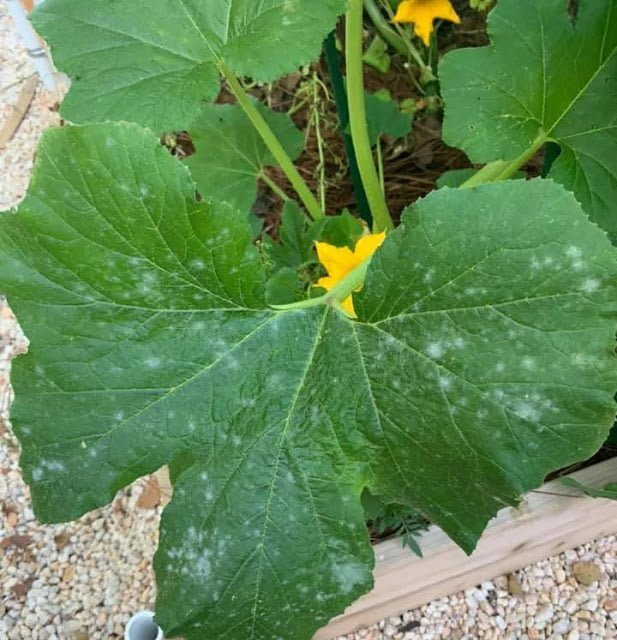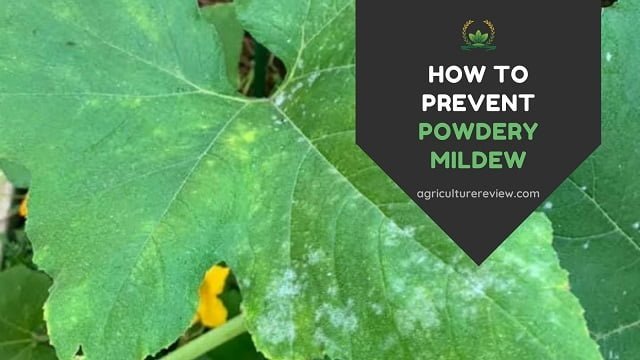This ultimate guide on how to prevent powdery mildew will help you to identify and control powdery mildew disease. Get to know best practices to deal with powdery mildew.
Table of Contents
Powdery Mildew: Introduction
Powdery Mildew is a serious fungal disease that affects various plants and causes decrease in overall yield. This disease is caused by fungus of the order Erysiphales. The primary causal organism that causes this disease in plants mostly in all parts of the world is Podosphaera fuliginea.
After reading this article completely you will be able to identify powdery mildew disease very easily and control them effectively whether you are a farmer or a gardener.
Fungus likes moist and moderate climate to grow and multiply, that’s why being a fungal disease it spreads very fast in the plant growing regions that has high amount of moisture in the air with moderate climate.
This favourable condition is mostly found in tropical regions as well as greenhouse. Mostly during rainy seasons in tropical areas the temperature remains high with abundant amount moisture around the plants to support the growth of fungus.
Hence, if you are a farmer or a gardener then you need to be highly cautious in this season. I advice you to keep checking your plants daily for any symptom of this disease.
I love plants and I can’t miss seeing them daily. If you have plants then spend your mornings or evenings in your farm or garden. It will energise you and fill your mind with positive vibrations.
If you are a gardener who loves to grow plants in terrace, backyard garden, balcony garden, etc. then visit to your plant daily and observe any signs of the disease to protect and save your plants.

Symptoms Of Powdery Mildew
- Appearance of white powdery spots on upper and lower leaves and stems.
- However the symptoms are similar to downy mildew but the difference is that in powdery mildew white powdery spots are seen whereas in downy mildew yellow spots are observed.
- They attacks young leaves first and causes curling of young leaves.
- Woolly aphids and other insects are vectors of powdery mildew that transmits the disease from one place to another. Presence of these aphids is a warning of the spread of this disease.
READ MORE: WAYS TO CONTROL APHIDS
Plants that can get easily affected by Powdery Mildew are:
- Gourds and melons such as Bottle gourds, Ridge gourds, Cucumbers, Pumpkins, Watermelon etc.
- Cereal crops such as wheat, Barley, etc.
- Legumes such as soybeans.
- Grapes, Apple, pears, Lilacs, Strawberry, Arabidopsis, onions and tree leaves of various tree varieties.
READ MORE:HOW TO SAVE PLANTS IN RAINY SEASON

How To Prevent Powdery Mildew?
Treatment for powdery mildew is simple and easy. You can control this disease by organic and inorganic ways. I will discuss both methods in this article. You can start with organic method, in 90% of the cases it will help to control the disease.
If after trying organic method you notice no effects on the control of this disease then at last you can try inorganic methods.
Organic Method
There are various organic methods to control this disease. The first method is very simple. You will need Buttermilk, water and spray bottle.
Procedure:
- Mix 50% of buttermilk in 50% water, i.e. make a solution of 1:1 of buttermilk and water.
- Fill this solution in spray bottle and spray it on your plant parts that are affected with the disease in the late evenings. This will help to control this disease by changing the pH levels.
Second method is nearly same but more effective, in the same prepared solution mix 3 to 4 crushed pieces of garlic and spray this solution. Keep spraying this mixture in the interval of 7 days to control the disease effectively.
The third organic method is very common and if you are in agriculture or gardening then you must have tried it on your plants. I have already discussed it in my previous articles. That is spray of neem oil mix on your affected plants.
READ MORE: HOW TO MAKE AND USE NEEM OIL SPRAY
The fourth organic method to control this disease is completely indigenous and traditional method. For this method you will need milk, water and spray bottle. Procedure:
- Mix 60% water in 40% milk in a spray bottle, shake it well and spray on your plants in the late evenings. This will also help you to control this disease.
- You can spray this solution on your plants in the interval of every 7 days to control this disease effectively.
This method i.e. the fourth method is a preventive method hence it is required to be done in plants on a regular basis so that no fungal growth occur in your plants.
SPECIAL NOTE: Remove the infected leaf parts from the plants in the garden or farm and burn them to stop the spread of this disease.
Inorganic Method
For controlling this disease inorganically you can use Potassium Bicarbonate, Hexaconazole, Tebuconazole, Myclobutanil, etc.
- You can make a solution of 0.2ml of hexaconazole in one litre of water to spray it on your plants on 15 days interval in late evenings or early mornings to control this disease.
- You can also spray wettable sulphur 0.3% or Carbendazim 0.1% in 15 days interval on your plants.
You can try any one of the above discussed method and see the result yourself. These methods to control powdery mildew will surely help you to save your plants.





Best information
Thank You for this beautiful comment, it means a lot to me, you can read more informative articles on agriculture and home gardening on this website.